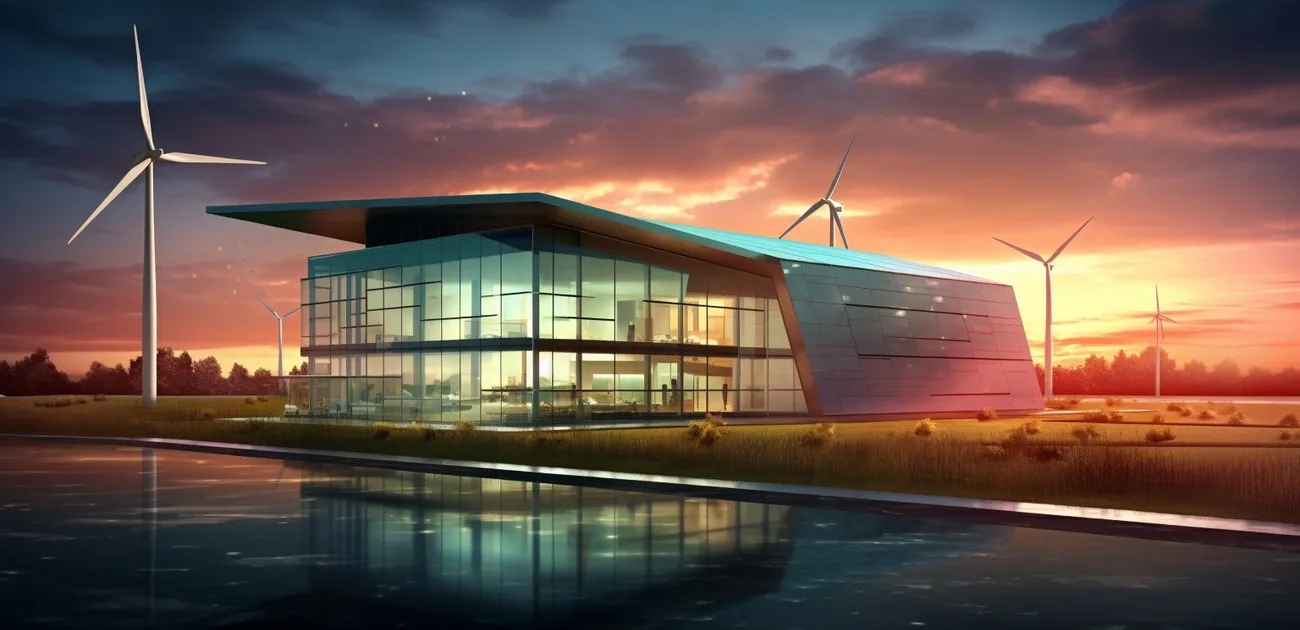Predictive Maintenance for Renewable Energy Infrastructure: Benefits and Implementation

Predictive Maintenance for Renewable Energy Infrastructure: Benefits and Implementation
Table of Contents
- Introduction
- The Importance of Predictive Maintenance
- Challenges in Renewable Energy Infrastructure
- Benefits of Predictive Maintenance for Renewable Energy Infrastructure
- Implementation of Predictive Maintenance
- Case Studies
- Conclusion
Introduction
Renewable energy infrastructure, such as wind farms and solar power plants, plays a crucial role in addressing the growing energy demands while minimizing environmental impact. These infrastructure assets are subject to wear and tear due to various factors like weather conditions, component aging, and operational stress. Timely maintenance and efficient asset management are essential to ensure the long-term reliability and optimal performance of renewable energy systems. In this blog post, we will explore the concept of predictive maintenance for renewable energy infrastructure, discussing its benefits and implementation strategies.
The Importance of Predictive Maintenance
Predictive maintenance is a proactive approach that utilizes advanced data analytics and condition monitoring techniques to detect potential failures and perform maintenance activities before they lead to costly downtime. Traditional maintenance practices, such as reactive or preventive maintenance, are often based on fixed schedules or waiting for equipment failures to occur. These approaches can result in unnecessary downtime, high maintenance costs, and inefficient asset utilization.
By implementing predictive maintenance in renewable energy infrastructure, operators can gain valuable insights into the condition and performance of critical components, enabling them to schedule maintenance activities at the most opportune times. This approach reduces unplanned downtime, minimizes maintenance costs, extends asset lifespan, and ensures optimal energy generation.
Challenges in Renewable Energy Infrastructure
Renewable energy infrastructure faces unique challenges that necessitate specialized maintenance strategies. Some of the key challenges include:
-
Remote Locations: Renewable energy installations are often located in remote areas, making it difficult to access and monitor the equipment regularly. Predictive maintenance allows for remote monitoring and early detection of issues, reducing the need for physical inspections.
-
Harsh Environmental Conditions: Wind turbines and solar panels are exposed to various weather conditions, including extreme temperatures, high winds, and heavy rain. Predictive maintenance helps identify potential damage caused by environmental factors, allowing for timely repairs or replacements.
-
Large-Scale Deployment: Renewable energy projects typically involve a large number of assets spread across vast areas. Implementing manual maintenance practices for such a scale is labor-intensive and time-consuming. Predictive maintenance streamlines the process by focusing efforts on critical components that require immediate attention.
-
Component Degradation: Renewable energy components, such as turbine blades and photovoltaic cells, degrade over time due to environmental factors and operational stress. Predictive maintenance enables operators to track the degradation patterns and plan maintenance activities proactively, reducing the risk of catastrophic failures.
Benefits of Predictive Maintenance for Renewable Energy Infrastructure
Implementing predictive maintenance in renewable energy infrastructure offers several benefits, including:
-
Reduced Downtime: By identifying potential failures in advance, predictive maintenance minimizes unplanned downtime, ensuring continuous energy generation and revenue flow.
-
Cost Savings: Predictive maintenance helps optimize maintenance activities, reducing unnecessary repairs and replacements. It also enables efficient utilization of resources, lowering operational costs.
-
Extended Asset Lifespan: Proactive maintenance practices based on real-time data analysis enable early detection of equipment degradation, allowing for timely interventions and extended asset lifespan.
-
Improved Safety: Regular monitoring and early fault detection enhance the safety of renewable energy infrastructure by mitigating risks associated with equipment failure.
-
Enhanced Performance: Predictive maintenance optimizes the performance of renewable energy systems by ensuring that components are operating at their peak efficiency.
Implementation of Predictive Maintenance
Successful implementation of predictive maintenance for renewable energy infrastructure involves several key steps:
Data Collection and Monitoring
To enable predictive maintenance, it is essential to collect relevant data from renewable energy assets. This includes sensor data, operational parameters, environmental conditions, and historical maintenance records. IoT devices and remote monitoring systems play a crucial role in capturing real-time data from the infrastructure.
Data Analysis and Predictive Modeling
Data analysis techniques, such as statistical analysis, machine learning, and predictive modeling, are employed to identify patterns, correlations, and anomalies in the collected data. These techniques help build models that can predict equipment failures and estimate remaining useful life.
Maintenance Planning and Execution
Based on the insights gained from data analysis, maintenance activities are planned and scheduled. Predictive maintenance algorithms prioritize maintenance tasks according to the criticality and predicted failure probabilities of assets. This approach ensures that maintenance efforts are focused on high-risk components, optimizing resource allocation.
Integration with IoT and Machine Learning
Predictive maintenance leverages the power of IoT and machine learning to automate data collection, analysis, and decision-making processes. IoT devices provide real-time data streams, while machine learning algorithms continuously learn from the data, improving the accuracy of failure predictions over time.
Case Studies
-
Wind Farm Case Study: ABC Wind Farms implemented a predictive maintenance system that utilized vibration sensors installed on wind turbines. By analyzing the vibration data, the system detected early signs of bearing wear and misalignment. This allowed the maintenance team to schedule repairs during planned maintenance periods, reducing downtime by 30%.
-
Solar Power Plant Case Study: XYZ Solar implemented an IoT-enabled monitoring system that collected real-time data from solar panels, including temperature, irradiance, and electrical output. By analyzing the data, the system identified underperforming panels and alerted the operators to clean or replace them. This resulted in a 15% increase in overall energy generation.
Conclusion
Predictive maintenance is a game-changer for renewable energy infrastructure, offering numerous benefits in terms of cost savings, enhanced performance, and extended asset lifespan. By leveraging advanced data analytics, IoT, and machine learning, operators can proactively monitor their assets, detect potential failures, and optimize maintenance activities. With the implementation of predictive maintenance strategies, renewable energy systems can operate reliably, efficiently, and sustainably, contributing to a greener future.